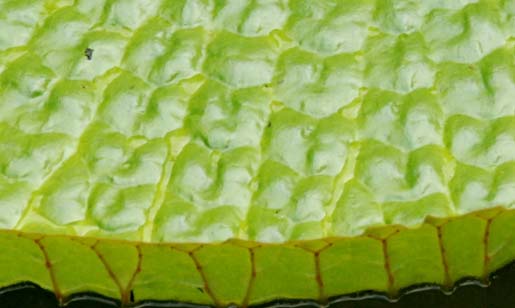A team of scientists at UCLA (University of California, Los Angeles) has been working on a new technique to boost the efficiency of plastic solar cells. They have found that by constructing the cells with leaf-like folds and wrinkles the cell efficiency is boosted by 47 per cent compared to similar flat cells.
The prevailing technology for harvesting solar power uses crystalline silicon photovoltaic cells which have an efficiency of approximately 20 per cent. These types of cells have been utilised for several decades but they are still expensive to make using a labour intensive process. Also due their construction materials they are fragile and inflexible. On the other hand we have the newer solar cells made from organic plastic semiconductors which are flexible, lightweight and cheap to produce. Until now the plastic solar cells have only been giving us efficiency figures in single figure percentages. That was too low for commercial viability. The leaf surface mimicking organic plastic cells have now crossed the 10 per cent threshold and UCLA quote a figure of 10.6 per cent efficiency.

Why does the leaf mimicking surface boost the efficiency of the solar cell? Ceri Perkins at physicsworld.com puts it this way: “For leaves and solar cells alike, the longer light remains in the photoactive regions, the better its chance of being absorbed. The shallow solar-cell wrinkles alter a photon's angle of incidence slightly, curving and thereby lengthening its trajectory through the active material. The deeper folds offer an even more pronounced effect but the researchers found that a balance of the two works best.”
An additional benefit of the new cells is that the wavelength range of harvestable light energy is increased, especially in the infra red area where other solar cells experience a rapid drop in efficiency. Bending and flexing these wrinkled cells also doesn’t impact upon their performance.
I hope these flexible and cheap cells continue to be developed and optimised to bring us cheap renewable energy for all our electricity demands at home and when out and about with our smart connected devices. Mimicking nature’s solar energy powerplants (leaf surfaces) seems to have given this group of researchers at UCLA an efficiency boost with their cells. Perhaps they can get together with the ultrathin organic solar cell researchers at Johannes Kepler University and the University of Tokyo to boost the efficiency of this technology even more.













